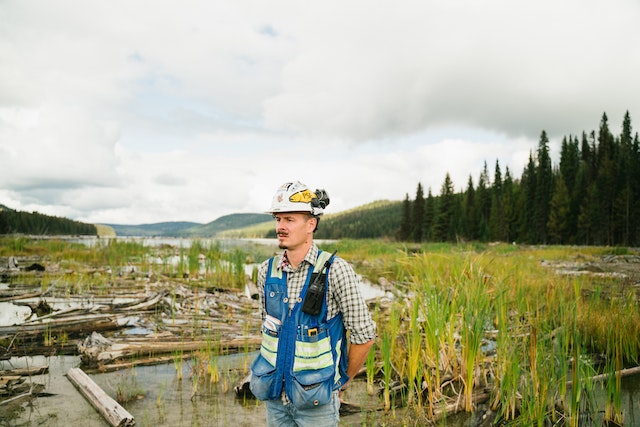Highways Road Design and Engineering
Liongate Construction brings the right design and engineering skills for highways road and engineering consultancy, along with ample resources, to help build safe, practical, and sustainable road networks throughout the UK.
Highways and Roads Design Experts
Highways roads design and engineering need careful planning to make sure they work well, are safe, and make sense for travel now and in the future. We have to think about how technology, society, and the environment will change when we plan roads. Good road design can bring communities together, help the economy grow, and improve the environment.
Liongate has the capability to manage every aspect of infrastructure design for a development site, starting from the initial idea all the way to securing Technical Approval for every design element post-planning approval, and delivering construction blueprints for tendering and on-site activities. Our profound understanding of the technical approval procedures enables us to offer optimal guidance and hands-on assistance, ensuring your infrastructure projects are planned, sanctioned, and built efficiently. Our services encompass:
- Transport Planning
- Water Management and SUDS Drainage Detailed Design
- Section 38 and Section 278 Highway Works Design
- Section 104 Agreements
- Construction Drawings for Tendering
- Site Supervision and Contract Administration
- Cost Assessment and Contract Documentation
- Road Safety Audits

Our road design team works diligently to collaborate with the local communities, government authorities, and environmental agencies, ensuring that every project not only meets regulatory standards but also aligns with the specific needs and values of the areas we serve.

CASEWORK
A residential site next to CARAVAN PARK IN Maldon, Essex
A vital route connecting several rural communities and agricultural areas, was in dire need of upgrades and improvements. Liongate Construction was tasked with the design and engineering of a comprehensive improvement project to enhance road safety, facilitate smoother traffic flow, and provide design consultancy for the new roads.
FREQUENTLY ASKED QUESTIONS
What is involved in highway and road design?
Highway and road design encompasses a range of activities including planning, geometric design, material selection, drainage planning, environmental impact assessment, and the integration of safety features. The goal is to create roadways that are safe, efficient, and sustainable, taking into account current and future traffic volumes, environmental considerations, and community needs.
What role does community feedback play in road design?
Community feedback is an essential component of the road design process. Designers engage with local residents, businesses, and other stakeholders to gather input and address concerns. This feedback helps to ensure that the road design meets the needs of the community, enhances accessibility, and minimizes negative impacts.
How do road designers ensure the safety of a roadway?
Safety is a paramount concern in road design. Designers follow established engineering standards and guidelines to ensure adequate lane widths, sight distances, and safe intersections. They also incorporate safety features such as guardrails, lighting, and signage. Additionally, road designs undergo rigorous safety audits and reviews to identify and mitigate potential hazards.
How is traffic flow and congestion managed in road design?
Managing traffic flow and reducing congestion are key objectives in road design. Designers use traffic modeling and simulation tools to predict traffic patterns and identify potential bottlenecks. They then develop design solutions such as additional lanes, improved intersections, or traffic management systems to enhance traffic flow and reduce congestion.
What environmental considerations are taken into account in road design?
Road designers aim to minimize the environmental impact of roadways by conducting thorough environmental impact assessments. This involves evaluating potential effects on local ecosystems, water and air quality, and noise levels. Designers also look for opportunities to incorporate green spaces, wildlife crossings, and erosion control measures to protect the natural environment.
How are road design projects funded and budgeted?
Road design projects are usually funded by federal, state, and local governments, sometimes with contributions from private developers. The budgeting process includes detailed cost estimation and aims to balance financial constraints with the need to meet safety and performance standards.

Regulations and guidelines
In the UK, road design and construction projects must adhere to a range of specifications, guidelines, and standards to ensure safety, efficiency, and sustainability. Some of the key documents and standards for highways road design and engineering include:
- Design Manual for Roads and Bridges (DMRB): Provides comprehensive guidance on road and highway design.
- Manual for Streets: Focuses on designing user-friendly and accessible streets.
- Traffic Signs Manual: Offers guidance on the use of traffic signs and road markings.
- Local Transport Notes (LTNs): Addresses specific road design and traffic management issues.
- Highways Act 1980: Governs the management and operation of roads.
- Road Traffic Regulation Act 1984: Provides the legal framework for traffic regulation.
- Equality Act 2010: Ensures road design considers the needs of all users, including those with disabilities.
- Construction (Design and Management) Regulations 2015 (CDM 2015): Outlines health, safety, and welfare duties for construction projects.
- UK Building Regulations: Parts of these regulations, such as accessibility requirements, can apply to road design.
- Sustainable Urban Drainage Systems (SUDS): Guidelines for managing surface water runoff and reducing flood risk.


CONTACT US FOR A Road Design Consultancy
You can contact us for a quick quotation. We aim to get back to you with a quotation in 2 working hours time.
See similar Services

CONSTRUCTION

CONSULTANCY
